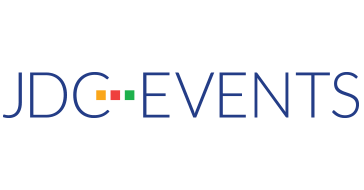
23 Apr Broadcast vs. Webinar vs. Webcast—What Difference Does It Make?
When you’re planning a virtual event, it’s important to determine the best format for your audience. But what’s the difference between a broadcast vs. a webinar vs. a webcast? Does the distinction between them even matter? The answer is yes: While there are some common features between the three, there are also some key differences and reasons to use one over the other.
Broadcast
A broadcast is an event that is livestreamed in real-time over the internet to an audience—think live television production. If your goal is to convey information to a very large audience in an effort to influence change, then a broadcast is a good option.
While getting the maximum reach out of your event is a big plus, there are some risks to consider with a live event. For starters, remember that any glitches are magnified by the fact that it’s live. Disruptions may be experienced by everyone in attendance and can provide an easy out for virtual participants who can leave with the click of a mouse. Since there is the potential for technical difficulties or speaker issues, you need an appetite for higher risk. Ensure your tech setup is up to the challenge. Test the platform and do at least one full technical run-through with your production team ahead of the event.
A run-through can also help you see where to smooth out the program to make it more seamless. Smooth transitions from one speaker to the next or one section of the production to the next are critical. What does the audience see? What does the audience hear? Those details are key to keeping your audience tuned in.
Webcast
Webcasts typically include both live and prerecorded content – streaming audio, presentation slides, and video clips – by one or more people, presented to an audience of several hundred or thousand.
A webcast is a good format for a larger audience since it can be viewed by thousands of audience members, depending on the technology platform used for the event. Additionally, some webcasts allow for audience engagement. For instance, a simulive webcast is one that includes both prerecorded and live content. There may be prerecorded speaker presentations followed by a live Q&A session, or the speaker presentations may be live while a simultaneous chat session is enabled to answer questions.
One of the upsides of a webcast over a broadcast is lower risk, since a good portion of the presentation is typically prerecorded. With a webcast event, there is less risk of technical difficulties or speaker issues. Another plus with a webcast is that the prerecorded portions of the event can be made available on-demand following the live event.
The key to a successful webcast is to allocate enough funds for editing. You’ll want to ensure that your prerecords are polished and show-ready. That includes having branded graphics, clean lower thirds or graphic titles/overlays in the lower portion of the viewing area, and smooth intros and outros (opening and closing visuals).
Webinar
Webinars are more collaborative and ideal for smaller groups, from a half-dozen to several hundred participants. These are the best option when you want to engage your event participants because they allow for fun and interesting interactive elements such as chats, Q&A sessions, polls, and whiteboards.
Whenever possible, incorporate engagement tools that enhance the goals of the event. Keep in mind, also, that when planning presentations, shorter is better. Fifteen minutes max is the rule of thumb for keeping the audience engaged. Q&A sessions are also useful tools for engaging participants, but be sure to allow enough time for the session. If all questions aren’t addressed during the event, ask speakers to respond to any outstanding questions via email, or include a list of all questions and answers as part of follow-up efforts post-event.
Which is Best?
Determining the best option between a broadcast vs. a webcast vs. a webinar for your virtual event comes down to a number of factors.
For instance, what’s the purpose of the event? If you are trying to reach thousands of people, then a broadcast may be the best choice. If you’re planning a super-sleek production with lots of “wow” moments, then a webcast may be the best approach. If you are looking for high levels of engagement, then a webinar is certainly the best option.
As with any event, budget is also a factor to consider. For instance, webcasting is more costly than a webinar, especially when it involves multiple speakers – whether they are live or prerecorded.
When budgeting, consider the comfort level of the event planning team. How well-versed are they in the use of the technology needed to produce components of the event, and in the technology needed to run the event itself? An in-house team may be able to manage a smaller event if their skills align with the event components. But larger events with bigger audiences, or those with the goal of creating a “wow” impact, may need to involve a professional production team.
Whether it’s a broadcast, webcast, or webinar, choosing the right format can make all the difference in putting together a virtual event that is memorable and makes the most positive impression.

Shafer Busch is JDC’s Senior Manager of Portfolio and Strategy. Her role is about listening, taking notes, and rapidly adapting to changing needs. That’s how she brings people together while working under tight deadlines—across states and nations.
After earning her Masters in Ethics, Peace, and Global Affairs, Shafer spent seven years working on events in the U.S. and Middle East. As COO and director of events at an international nonprofit, she created events to entertain, inspire ideas, and empower voices. A specialist in working with policymakers, diplomats, and entertainers toward a common goal, Shafer’s accomplishments include bringing together an impressive list of who’s who. Her portfolio includes: an annual awards dinner for individuals and organizations that shape social and public policy, a dinner and conversation for U.S. government and intelligence leaders and creative minds from Showtime’s “Homeland” series, and a student discussion event about women in film with the Oscar-winning director of “The Hurt Locker” and “Zero Dark Thirty.”



